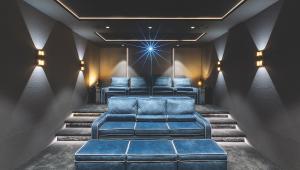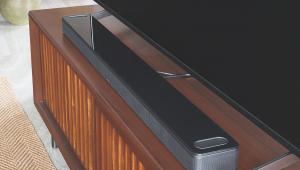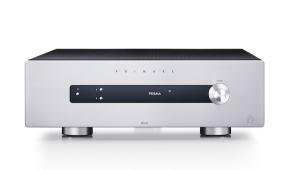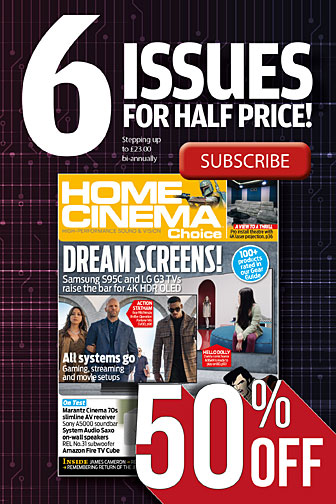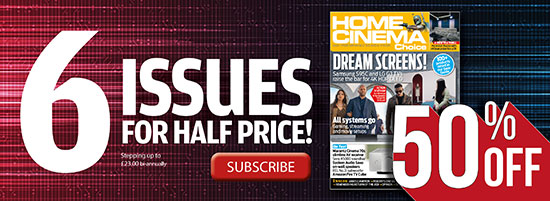Samsung BD-H8900

 From Laserdisc players that also spin CDs to Blu-ray/DVD/VHS recorders, combis have been part of the home entertainment landscape for decades. Their appeal is easy to understand. Stuffing two or more different products into a single chassis means fewer boxes in packed AV racks, while all the functions are controlled from a single interface and remote control.
From Laserdisc players that also spin CDs to Blu-ray/DVD/VHS recorders, combis have been part of the home entertainment landscape for decades. Their appeal is easy to understand. Stuffing two or more different products into a single chassis means fewer boxes in packed AV racks, while all the functions are controlled from a single interface and remote control.
Although not as prevalent as they used to be, a few companies still keep the combi flag flying. One of them is Samsung, whose BD-H8900 is a Freeview HD recorder and 3D Blu-ray player bundled up in a single box. Panasonic and LG also make similar models.
It’s an updated version of last year’s BD-F8900 with a new-look user interface and multiroom functionality in conjunction with Samsung’s new M series of wireless speakers. At £330 it’s not cheap, but check the spec
and it starts to make sense. You’re getting a dual-tuner Freeview recorder with a 1TB HDD and a hi-def disc spinner with 4K upscaling into the bargain – not to mention Samsung’s Smart Hub and more wireless network functionality than you can shake a router at.
The exterior design is identical to the BD-F8900, retaining the curved right-hand corner and gloss-black bodywork. At 55mm high, this deck is a far cry from the chunky DVD/VCRs from which it descends, and should therefore slot into shelves with little fuss. Styling is moody and minimal. Only a small LED display, covered USB port and skinny disc tray adorn the fascia. A round panel of touch-sensitive controls sits on top.
However, like most Blu-ray decks designed for mass-market consumption, the BD-H8900’s build quality is disappointing. The plasticky finish, lightweight bodywork and lack of overall sturdiness left me underwhelmed, particularly when I stacked it on top of an Oppo BDP-105D with its majestically robust casing. Sure, the Oppo costs three times as much, but it underlines the sort of sacrifices you have to make when buying budget.
Bare backsideRear connections are boiled down to the minimum – HDMI and optical digital audio outputs, Ethernet and a second USB port that lets you connect an external HDD for extra recording space. The deck’s 1TB hard disk holds 257 hours of hi-def programmes or 411 hours of SD. And the recording mode is set in stone so you can’t trade off picture quality for recording time.
Dual Freeview HD tuners afford you great flexibility, letting you watch a third channel while two others are being recorded, and you’re not limited to channels on the same multiplex either. You can’t visit the Settings menu while recording, but nothing else is off-limits. Naturally you get a wide range of classic PVR trickplay features, such as pause/rewind live TV and series link, while a range of helpful alerts and dialogue boxes keep you abreast of recording clashes and series options.
Elsewhere the BD-H8900 has plenty of tricks. Most obvious is its great range of online apps, which can be accessed via the built-in Wi-Fi connection. VOD comprises the same heady channel roster found on the brand's BD-H6500 Blu-ray player winner, yet this deck's PVR status means the S Recommendation feature (which tries to learn your viewing habits and suggests content) is added.
As well as the ability to stream media from devices on a home network – including MKV, AVCHD, DivX and even FLAC (hi-res files of the latter are downconverted to 48kHz) – the new multiroom feature lets you play a CD and beam it to Samsung’s M series speakers using its Android/iOS Multiroom App. Sadly this feature wasn’t available at the time of testing. You can also rip CDs direct to the hard drive.
All these goodies are nestled in a new-look UI that I didn’t have any trouble getting to grips with. It’s pretty much the same layout as the 2013 menus but with a new colour scheme and more elaborate graphics. There's a sense of fun here, using poster art, logos and illustrations wherever possible.
I think Samsung’s EPG is one of the best around, for the simple reason that it crams everything you need into a single screen without ever feeling cluttered. There’s a live TV screen in the corner, and a seven-channel programme grid with the synopsis at the bottom. Handy shortcuts make it easy to filter channels and edit favourites, and it’s complemented by an onscreen banner that lets you scan the full schedule while you’re watching a programme.
However, having played with several YouView and Freetime PVRs, which combine broadcast TV and online catch-up services in a single EPG, Samsung’s rigid segregation of its Freeview functionality and Smart content feels weirdly old-fashioned these days.
More pressing gripes concern occasionally sluggish cursor movement (despite the presence of a dual-core processor), a slow, awkward web browser and the Recorded TV menu, which involves too much faffing about to display all the recordings on the same screen. PVRs like Pure's Avalon 300R are smoother in use.
Hi-def Freeview picture quality is up to scratch – the stark Minnesotan landscapes of Fargo on Channel 4 HD are sharp and punchy, with plenty of subtle detail and shading within the snow. As characters trudge through the whiteness, their outlines are crisply drawn.
The image has a rich, forceful quality that also benefits from good contrast and practically no noise to speak of. Archived to the HDD, it plays out with no discernible drop in quality.
So does all this make the BD-H8900 worth buying? Sort of. Aside from the addition of a niche multiroom CD function and a lick of paint for the menu system, the BD-H8900 is near identical to its predecessor, which means you might as well pick up the 2013 model at a lower price. Furthermore, some may expect this deck to enable archiving to Blu-ray disc, which it doesn't. For that sort of retro functionality, Panasonic's DMR range is required.
Still, this lack of progression shouldn't detract from the fact that the BD-H8900 is generally impressive. Build quality leaves a lot to be desired, but overall this proves there may be life in the old combi yet.
Samsung BD-H8900, £330 approx
www.samsung.co.uk
Verdict: 4/5
 |
Home Cinema Choice #351 is on sale now, featuring: Samsung S95D flagship OLED TV; Ascendo loudspeakers; Pioneer VSA-LX805 AV receiver; UST projector roundup; 2024’s summer movies; Conan 4K; and more
|













